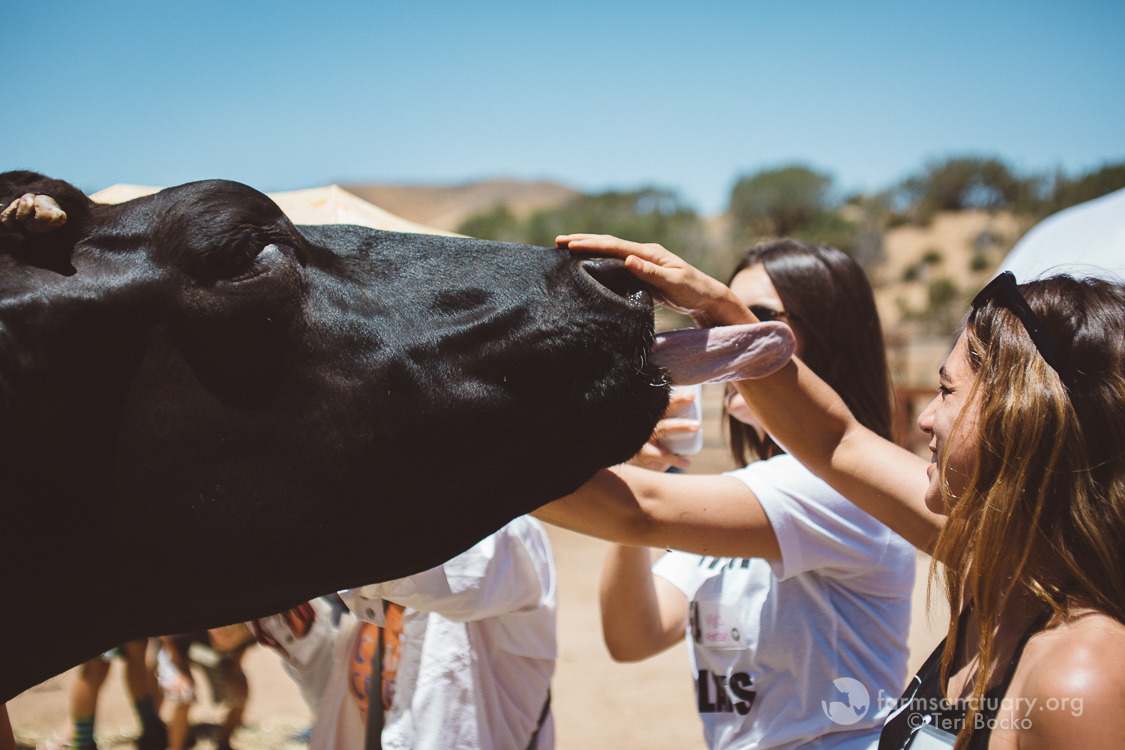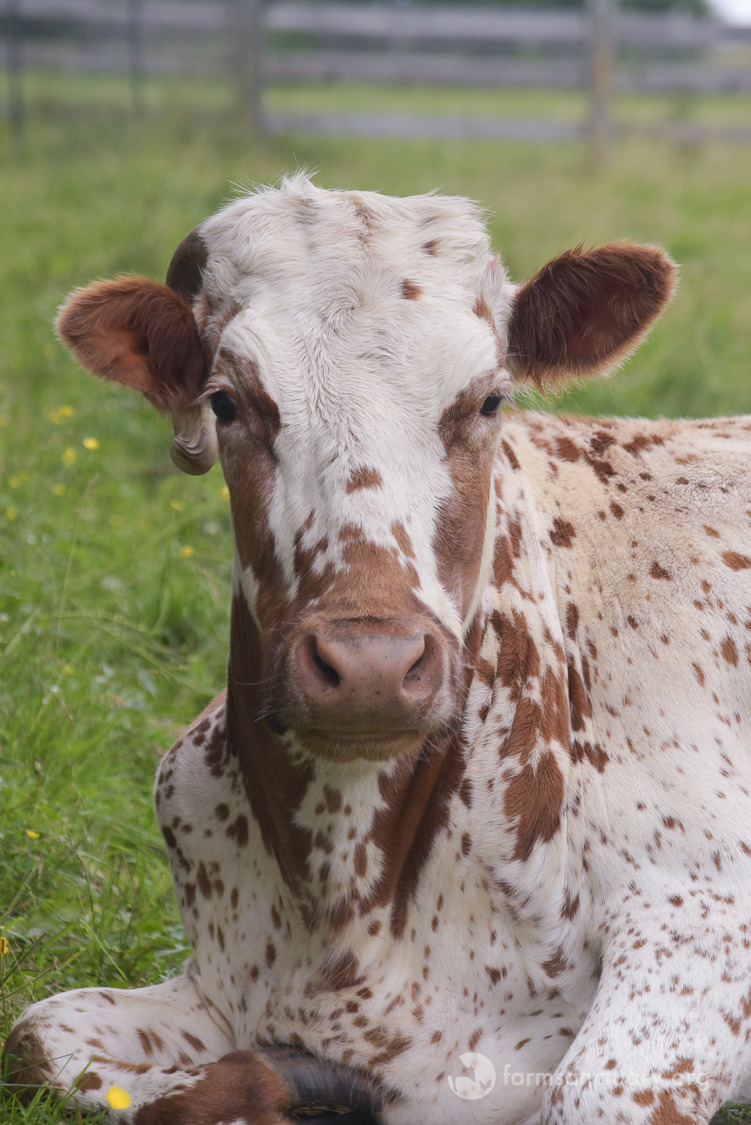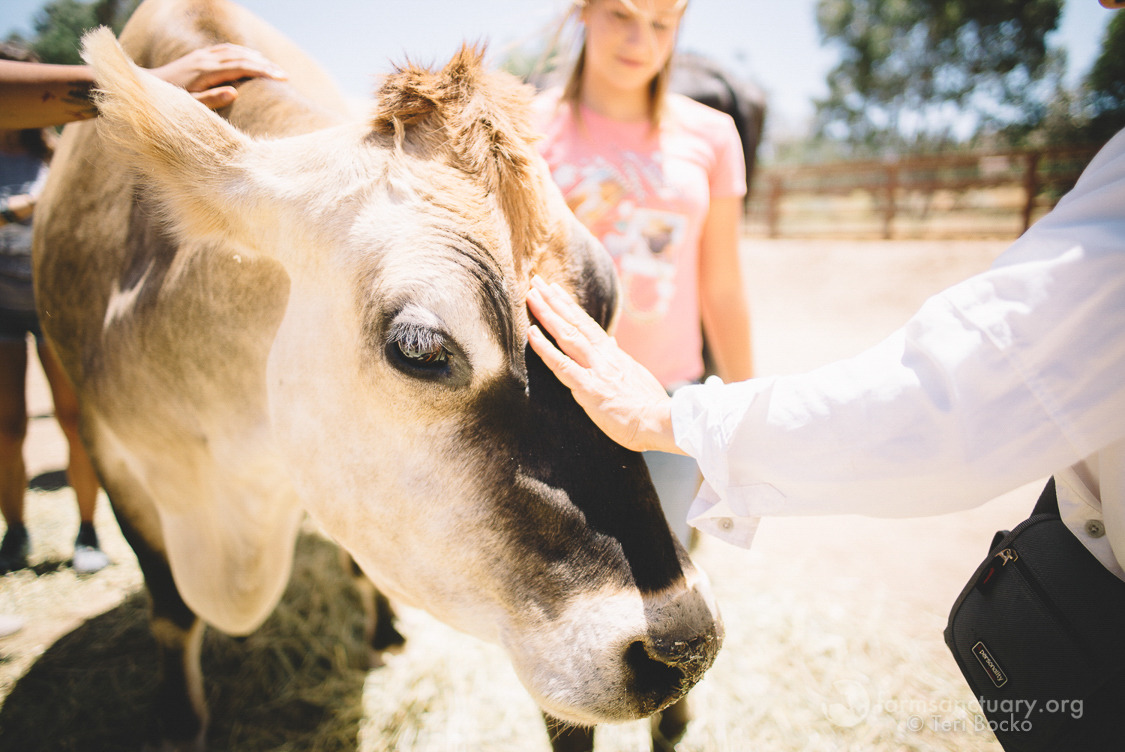
But, seriously — CHEESE!
This question comes up a lot — even from vegetarians — and hey, I get it. Cheese contains a lot of the flavors that signal deliciousness to our taste buds: creaminess, fattiness, saltiness, and umami. Not only is cheese an integral component of many people’s favorite dishes, but it’s just one of those ingredients that people have a particular fondness for.
I know, because I was one of those people for a long time. I was so obsessed with cheese that I even got a raclette maker as a Christmas gift. I was so hardcore that I even ate époisses, the goopiest/stinkiest cheese around. So not only does it make sense for people to ask me how I could forego cheese (because it’s delicious) but also to ask me how I could forego cheese (because I’m somebody who was particularly obsessed with it).
Why I don’t miss cheese

Actually, nixing cheese was much easier than you might suppose. Here’s a brief thought experiment to help illustrate why it wasn’t too difficult:
Imagine that a friend invites you over for dinner, and serves you a delicious helping of her famous homemade lasagna. You try it, love it, and beg her for the recipe. That’s when she explains that there’s no trick to it, really — you just have to make sure that you start with a fresh quarter-pound of Grade A, organic… kitten cutlets.
For most of us, this revelation turns the same food item — a plate of lasagna — from something that was delicious and enticing into something that is horrifying. Even though the lasagna would taste the exact same now as it did before you found out it was made of kitten meat, there’s no way you’d take another bite, let alone ask for a second helping, or would want to recreate your friend’s recipe at home. Even though you enjoyed the taste, as soon as you found out the gruesome details about how the lasagna was made, that instantly transformed it from a delicious food item into something that was completely inedible.
(Special thanks to Melanie Joy for explaining this phenomenon so well in her presentation about the psychology of eating meat.)
This kitten lasagna phenomenon is why it was so easy for me to ‘give up’ cheese. Once I found out what was required to make cheese, that cheese transformed from a food to a non-food, just like the kitten lasagna. It’s as easy for me to avoid eating cheese as it is for me to avoid eating my neighbor — these things are just non-foods. Somebody saying “why don’t you eat some cheese?” now feels as ridiculous to me as saying, “why don’t you kill your neighbor and eat him?” There’s just no way I’m going to willfully participate in the violence that would be necessary in order to have cheese (or my neighbor) for lunch.
Where dairy comes from
But wait a sec. Don’t cows “just make” milk? How is it harmful to collect their milk? Wouldn’t their udders burst if we didn’t milk them? It seems like we’re doing them a favor!
I operated under this misconception for a long time. There are lots of reasons for this misconception to remain so persistent, especially because: (1) we don’t want to feel bad about eating cheese, and (2) the dairy industry has a huge financial interest in perpetuating this misconception. But the fact is that, NO, cows do not “just make” milk.
Without getting too graphic, in a nutshell, this is how milk is “made.”

Just like humans, mother cows don’t produce milk unless they’ve recently given birth to a baby. So if you run a dairy farm, you need pregnant cows. To achieve this, dairy farmers forcibly inseminate female cows using a contraption that is sometimes referred to as a “rape rack.”
Once mother cows give birth to their babies, the babies must immediately be taken away, because otherwise the baby cows would drink the milk, instead of the paying human customers. Mom and baby cry out for each other when they’re separated, but her calf is quickly whisked away. Male calves will be sold to the veal industry. Female calves will grow up to become dairy cows like their mothers.
Just like with humans, eventually after the baby is taken away, the mother will stop producing milk. At this point (typically about 90 days later) she will be forcibly inseminated again, then her baby will be taken away again after she gives birth, and the process repeats and repeats. Not only is this process very hard on her emotionally, but it’s also very taxing physically. Dairy cows often suffer calcium deficiencies and other hardships from being constantly impregnated. They live shorter lives because of this, and when they’re finally too weak to keep giving birth, they’re killed for meat.
The particularly cruel and painful nature of a dairy cow’s life has led people to argue that “there is probably more suffering in a glass of milk than a pound of steak." And this suffering can’t be avoided by choosing dairy products that are labeled as “local,” “organic,” “free-range,” “grass-fed,” and so on. The bottom line is: if a human wants to eat/drink a cow’s milk, that cow has to be impregnated, and her calf has to be taken away. Period.
Some things I definitely do not want to support are (1) rape, and (2) taking babies away from their mothers. That’s really, really messed up. So yeah, screw cheese.
(If you want to learn more about what’s involved in dairy production, there’s more info here, but be forewarned that the page includes some difficult photos.)
Ok, that’s horrible. But what can I eat instead?
Option 1: Figure out what cheese “does” in a dish, and find something else that “does” the same thing.
Often times if you just order a regular menu item minus the cheese, it will be very “blah,” because the cheese was there to serve a role in the dish. So, the trick is to figure out what role the animal ingredient was playing, and replace it with a plant-based ingredient. For instance:
Burrito: Cheese and sour cream served a creamy/fatty role. So sub those out with creamy, fatty guacamole.
Sandwich with cheese: The cheese was serving a fatty/salty role. So if you’re ordering a sandwich minus the cheese, peruse the other sandwiches on the menu for things you can sub out to replace the missing fattiness and saltiness. Avocados, olives, pickles, mustards, tapenades, hummus, vegan cream cheeses/mayos, etc., are all your friend!
Pizza: Cheese on pizza is there to be fatty, creamy, and dryness-preventing. Instead, simply upping your topping game can result in an envy-inducing vegan pizza. Load up on flavorful and creamy toppings like avocado, roasted red peppers, artichoke hearts, whole cloves of roasted garlic, zucchini, fresh tomato slices, olives, extra marinara, and dollops of (dairy-free) pesto. Also consider getting your pizza as a calzone, so that everything will stay steamy and delicious without drying out.

…and so on! While there are lots of great “fake cheeses” out there these days (see Option 2), by using this strategy instead, you can still have something delicious even if you’re somewhere that doesn’t offer plant-based cheese.
Option 2: Swap out a plant-based cheese.
Odds are, you’ve tried a really gross plant-based cheese at some point. I certainly have. But I’m here to tell you: don’t be frightened! Everything will be ok if you just follow a couple rules of thumb.
If you don’t like the dairy version, then you won’t like the plant-based version, either.
Why did I think that it was a good idea to buy the plant-based version of Kraft Singles, the plastic-wrapped cheese slices? I don’t like regular Kraft Singles, and guess what? I didn’t like the non-dairy ones, either.
Mass-produced vs. artisanal: Cost difference, flavor difference.
A tub of Tofutti vegan cream cheese, which is mass-produced and will survive in your fridge ad infinitum, will cost less (but also not taste as great) as a fresh vegan cream cheese handmade at your local cafe. Of course, it’s not always practical to eat the fancy stuff all the time — just make sure that your expectations are fair and appropriate for the product you're getting.
The plant version isn’t always cheaper.
My absolute favorite plant-based cheese is made by Miyoko. These cheeses are delicious, but they aren’t cheap. In fact, they cost pretty much exactly the same as an artisanal animal’s milk cheese of the same size. That’s because (1) nuts are expensive, and (2) the cheese was lovingly made in small batches. It’s not fair to expect something like this to be super cheap just because the dairy is out of the equation. While it’s entirely possible to be vegan on a strict budget, luxury food items are always going to be pricey, whether they’re vegan or not.

Don’t be afraid to make it yourself.
When playing around with plant-based cheese, many folks run into roadblocks. Either existing products aren’t to their liking, or else they may contain a problematic ingredient, such as an allergen. A way around this issue is to follow Options 1 & 3 instead, but you can also expand your vegan cheese options by making something at home. For instance, I don’t like commercial boxes of vegan mac ‘n’ cheese, so I make my own ‘box’ powder. It’s easier, cheaper, and tastes better. Try googling the food item you want to veganize — you’ll be surprised by the tons of great recipes out there these days.
Option 3: Try a cuisine that doesn’t use much cheese.
The easiest way to eat something that tastes delicious without cheese is to eat a dish that never included cheese in the first place. That way, the flavors will already be balanced and awesome.
American cuisine is often overloaded with cheese, but a lot of other culinary traditions have crafted delicious dishes that taste fabulous without any cheese at all. Keep an eye out for local restaurants that fall into these categories.
Especially if you weren’t an adventurous eater before, you’ll be shocked by how many new and wonderful dishes you’ll discover by branching out in new cheese-free directions.
Ethiopian (flavorful veggie ‘comfort food’ that you eat with a soft hand-held bread)
Thai (rich coconut curries, plus bright veggie dishes seasoned with lime and lemongrass)
Burmese (fried garlic noodles and rich stews, crunchy/salty tea leaf salad)
Chinese (flavorful stir-fries, saucy veggie-protein dishes with fresh rice)
Indian (deeply seasoned tomato-based curries, or crispy, savory crepe-like dosas)
Japanese (load up on veggie sushi, or a big noodle dish or veggie ramen)
Tibetan (momo = the dumpling of your dreams)
Mediterranean/Middle Eastern (savory spreads, flatbreads, and falafel, with tangy lemon and fresh herbs)
…and many more!
It’s a brave, new, post-cheese world

Whether Option 1, 2, or 3 will work best for someone will vary, depending on their preferences and situation.
But by drawing upon these different strategies, it’s pretty easy to live the rest of one’s life eating awesome food, without having to support those horrible dairy practices discussed above. Good riddance, cheese!